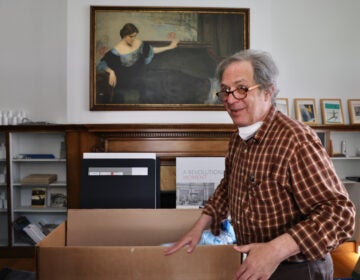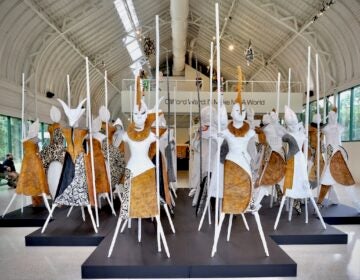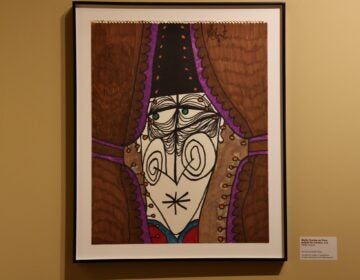The last picture show: After a century of exhibitions, the Philadelphia Art Alliance hosts what might be its final art show
The former mansion will close with the rest of the University of the Arts.
Listen 1:52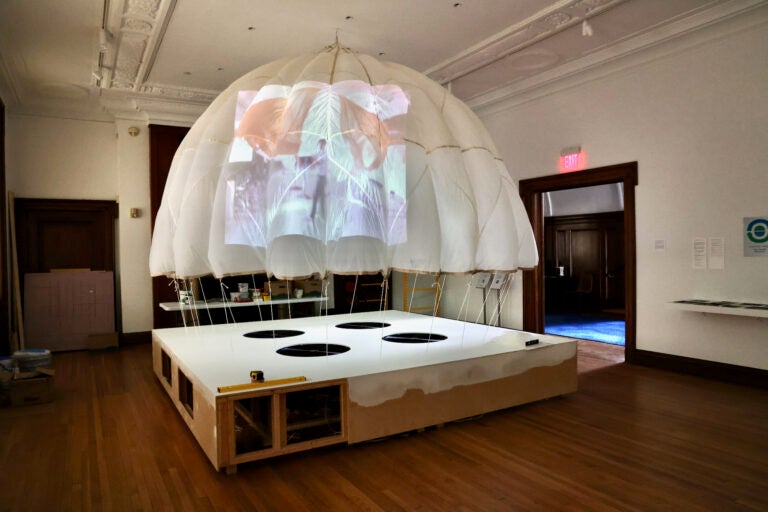
A video projection of "Dream Reel" appears inside "Floating Theater" by Jud Yalkut and Yukihisa Isobe. The piece was originally displayed in 1969 and recreated as an archival presentation in 2024 for ''Community of Images: Japanese Moving Image Artists in the US, 1960s-1970s'' at the Art Alliance. (Emma Lee/WHYY)
From Philly and the Pa. suburbs to South Jersey and Delaware, what would you like WHYY News to cover? Let us know!
The Philadelphia Art Alliance is buzzing with screeching noise music, the clickety-clack of a 16mm projector, and electric fans billowing parachute cloth upward into a dome so it can act as a projection screen.
This could be the last hurrah before the building — the former mansion of playwright and Alliance co-founder Christine Wetherill Stevenson — goes quiet. The building became the home of the Art Alliance in 1926 and operated as an independent organization until 2017, when the University of the Arts acquired it. Two weeks ago, UArts abruptly shut down, leaving the future of its assets uncertain.
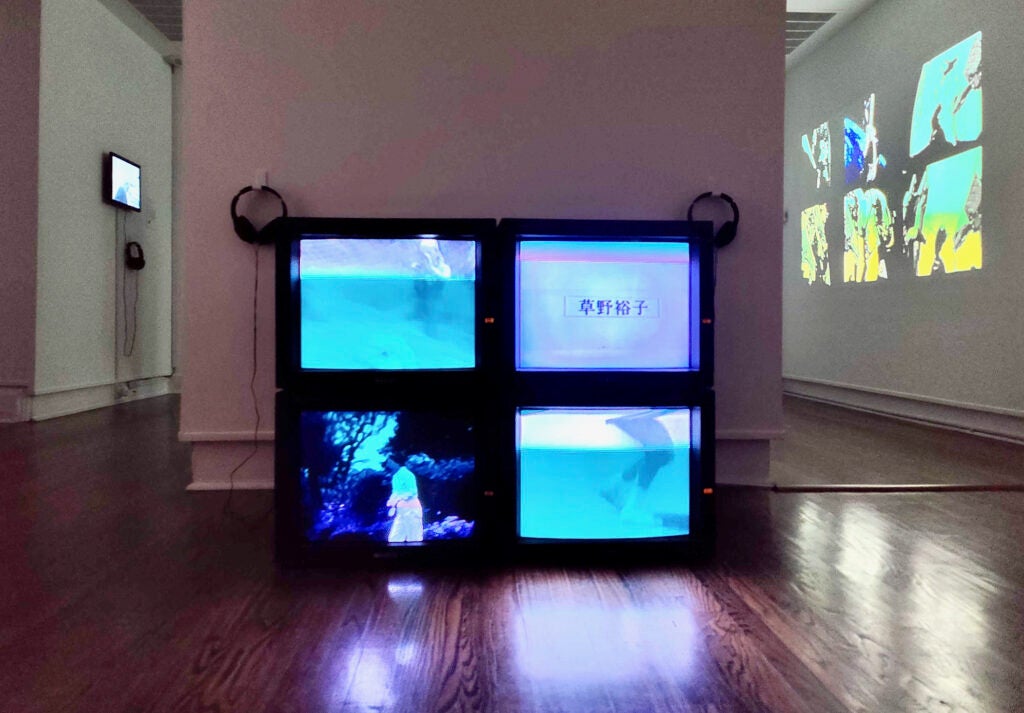
The shutdown happened seven days before the group Collaborative Cataloging Japan was to open its show “Community of Images: Japanese Moving Image Artists in the U.S. 1960s – 1970s,” a retrospective of a moment in international art when Japanese video artists were permitted to travel to New York for the first time since World War II, and soak in the American avant-garde.
Ann Adachi-Tasch, director of Collaborative Cataloging Japan, sought special permission from UArts’ office of the president to open the exhibition, even though UArts is technically shuttered. Through an arrangement with chief of staff Franklyn Canton, UArts will supply security staff to open and close the building, Adachi-Tasch said, and CCJ will hire its own gallery attendants and do its own custodial work.
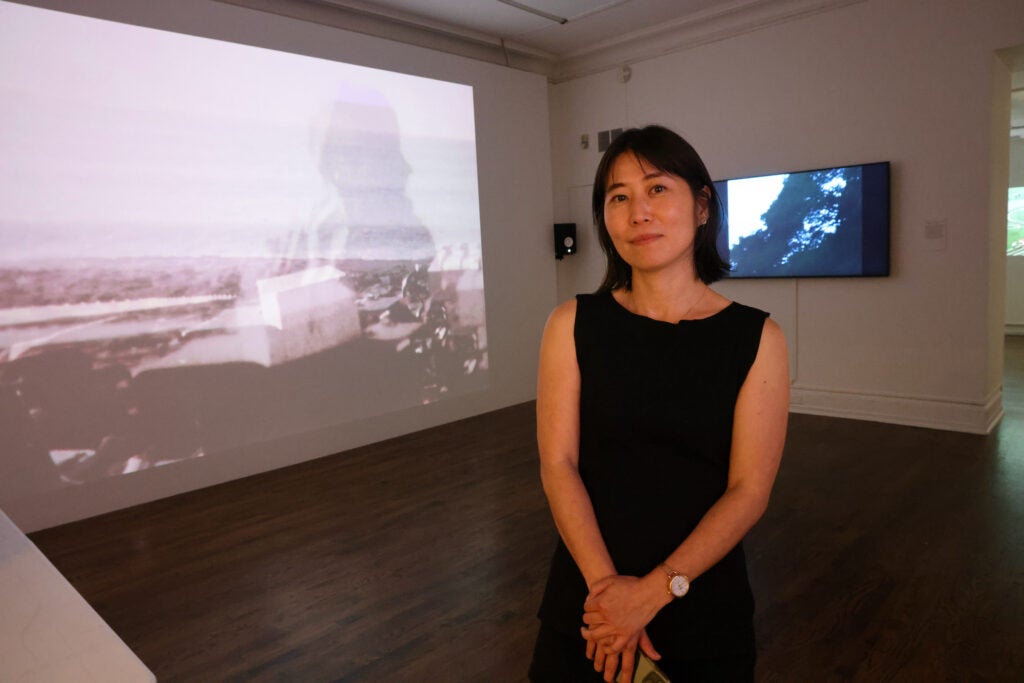
CCJ has launched a crowdfunding campaign to cover any unexpected costs of keeping the Art Alliance building open until Aug. 9.
CCJ has had a run of bad luck with its own exhibitions. Its inaugural exhibition four years ago, “More Than Cinema” at Pioneer Works in Brooklyn, opened in February 2020 but closed almost immediately due to COVID-19 shutdowns. It reopened that fall. “Community of Images” is its second exhibition and nearly met the same fate.
“When the announcement happened [to shut down UArts], this was 80% done,” Adachi-Tasch said. “They knew it was a Pew grant. It’s quite a large grant. Franklyn Cantor really supported us and became that liaison, pushing it for us, which I’m so grateful for.”
Assembling and installing “Community of Images” was no small feat. It took years to locate many of the elements.
For example, “Shelter 9999” was made by the Japanese experimental filmmaker Takahiko Iimura and the New York sound artist Alvin Lucier. They overlaid still images on top of a film projection while performing improvised noise music. After its initial 1966 performance, the pieces of Shelter scattered into different archives in Tokyo and New York. The curators discovered parts of it in the New York Public Library.
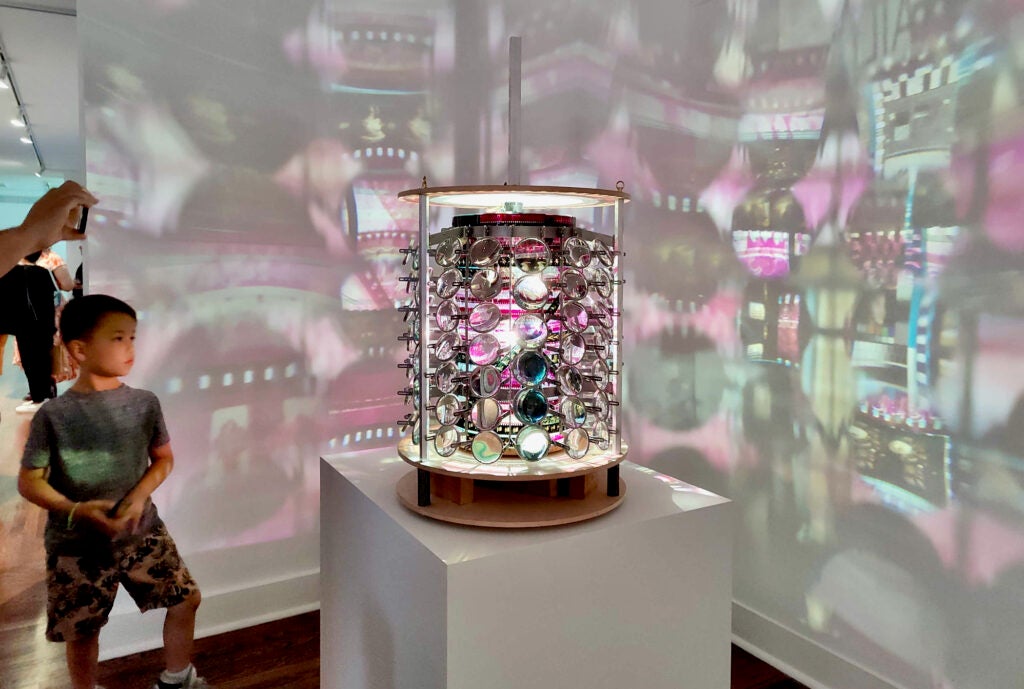
Another piece, “Liquid Projector” by Ko Nakajima, is a motorized sculpture made of 16mm film and colored glass that spins light around the room like a psychedelic, film-based disco ball. The artist made it in 1969 but lost track of it.
“The artist didn’t know what happened to the original,” Adach-Tasch said. “So he made a design, and [Philadelphia exhibition designer] Greenhouse Media recreated a 2024 version.”
“Community of Images” stresses the collaborative energy between artists in Japan and the U.S., which had been stifled for decades. The Security Treaty following World War II restricted Japanese people from traveling abroad for pleasure. In the ensuing 20 years New York became an international destination for contemporary art, as well as a hotbed of countercultural activity.
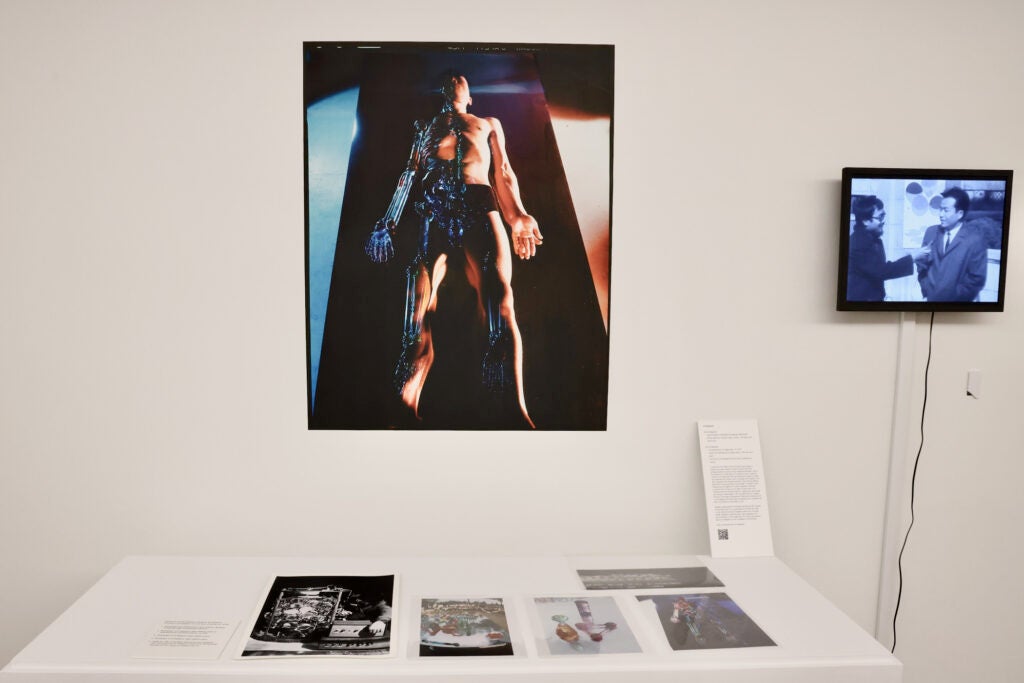
By the time travel restrictions were lifted in 1964, Japanese artists were eager to be part of that scene.
“In Japan, there were protest movements against the U.S-Japan security treaty. Japanese students and activists didn’t want to be involved in U.S. foreign policy at the time.” said co-curator Julian Ross. “When these artists moved to the United States, seeing the young generation here also protesting against the Vietnam War, that resonated.”
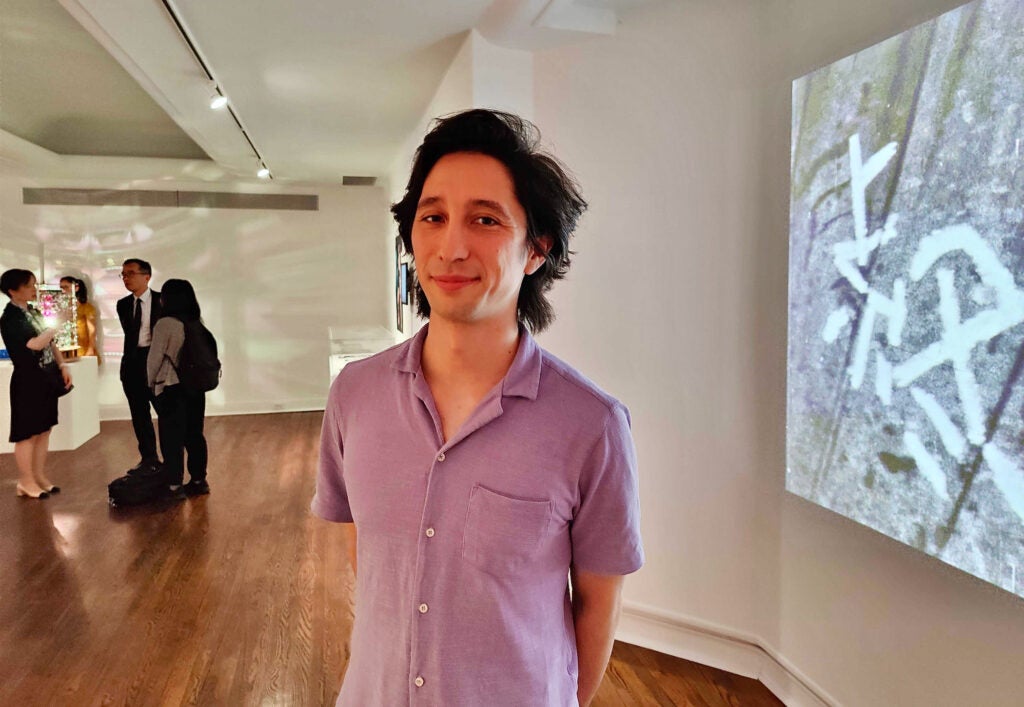
Iimura, who by the 1960s was well-established in Tokyo, would relocate to New York for many years, collaborating with figures like Lucier and Yoko Ono. Others stayed for short periods, bringing back to Japan the electronic media theories of Marshall McLuhan and the “intermedia” ideas of the Fluxus movement.
Hacking technologies, two-way broadcast systems, and immersive media installations became fodder for “Crosstalk,” a series of events held at the American Cultural Center in Tokyo from 1967–1969.
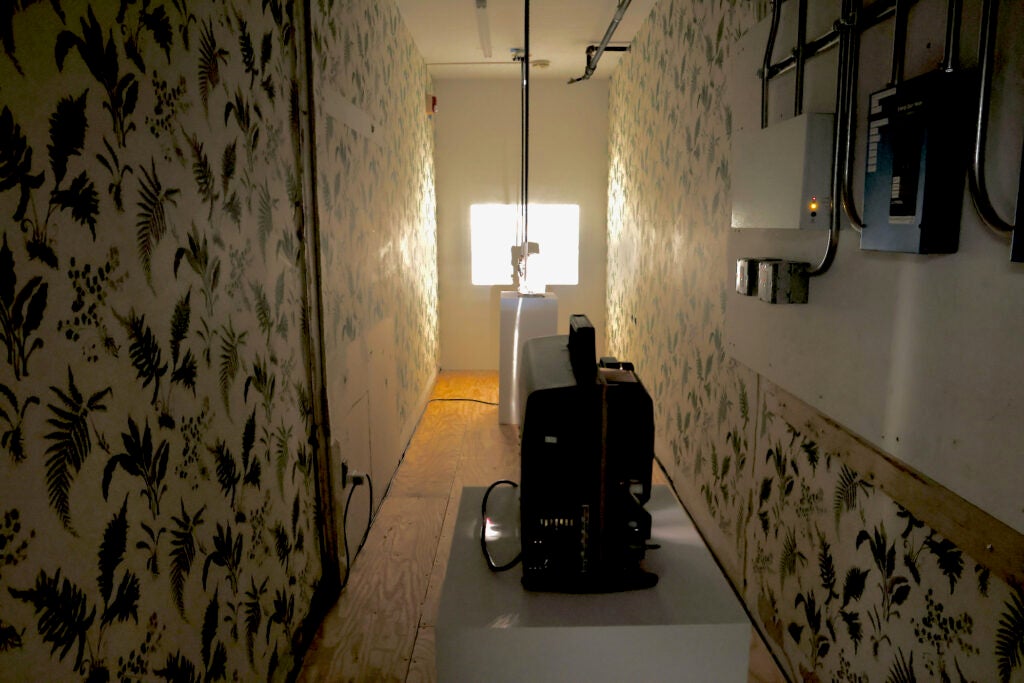
“Due to the nature of these collaborations and materials, the experiences are a bit scattered. Sometimes the stories of these collaborations and experiences abroad aren’t told in the history of Japanese art or the history of American art,” Ross said. “It’s a really exciting moment of interaction and exchange of ideas that took place.”
Ross, who is based in Amsterdam, watched from afar as the exhibition he spent years researching and assembling nearly disappeared with the collapse of UArts. Plans to screen films by the artists in the exhibition at the Lightbox Film Center had to be scuttled as Lightbox closed down with the rest of UArts. The films will instead be shown in a small room inside the Art Alliance.
“We’re so sorry to hear what’s happening. It is difficult to come from abroad and drop in and really get a sense of how this decision [to close UArts] impacts the whole community here,” he said. “It shouldn’t be the last show here. It’s such an amazing building with a beautiful history. I hope it continues in some way.”

Get daily updates from WHYY News!
WHYY is your source for fact-based, in-depth journalism and information. As a nonprofit organization, we rely on financial support from readers like you. Please give today.



